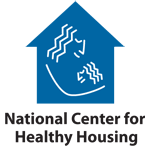|
|
Green Living
We do not strictly control Google ad content. If you believe any Google ad is inappropriate, please email us directly here.
Sort results by: Date Added | Alphabetically - The Green Label program is replaced by the stronger and more comprehensive Green Label Plus standard.
- Clean clothes and bedding frequently, using gentle, low-odor products.
- Tips for laundering effectively.
- The National Center for Healthy Housing (NCHH) and the Alliance for Healthy Homes (Alliance) have announced plans to join forces.
- Revealing inert ingredients will help consumers make informed decisions and will better protect public health and the environment.
- An energy mortgage increases a consumer’s buying power.
- Study shows cinnamon oil is just as effective at killing several common bacteria as many other antiseptics commonly used in hospitals.
- Help for cleaning green from Sierra Club Green Home.
- The asthma & allergy friendly™ Certification Program administered by the Asthma and Allergy Foundation of America (AAFA) in partnership with the research organization, Allergy Standards Limited (ASL), announced on November 17th, 2009 that it has developed and adopted a certification standard and testing protocol for Non-Disinfecting Hard Surface Spray Cleaning Products.
- A better way to get rid of roaches.
- Pesticides can be serious pollutants, and are found in surprising places. Here are tips for less toxic alternatives.
- Three viewpoints of designing a healthy building include: the importance of sustainable development, the role of occupants for ensuring indoor air quality, and ongoing developments related to indoor finishes with low chemical emissions and good fungal resistance.
- In early 2007 Kevin and Kathy Christopherson set about building a home in Hanover, Wisconsin. This was no ordinary new home construction, though. Since Kathy has an acute chemical sensitivity, special precautions were necessary – precautions that presented some particularly challenging construction issues.
- The majority of U.S. families (67 percent) live in a home with at least one major health risk.
- What to look for, and resources to help you find the best, most sustainable products for your baby or child.
- Biomonitoring, the measurement of chemicals in blood, urine, and other tissues or fluids, is becoming an increasingly common tool in the study of human exposure to environmental chemicals; the problem is, it's hard to connect with health outcomes (abstract only).
- Although scientists have postulated a wide range of adverse human health effects of exposure to endocrine-disrupting chemicals (EDCs), the nexus of the debate is the concern that prenatal and childhood exposure to EDCs may be responsible for a variety of abnormalities in human sexuality, gender development and behaviors, reproductive capabilities, and sex ratios.
- Burning candles made from paraffin wax – the most common kind used to infuse rooms with romantic ambiance, warmth, light, and fragrance – is a source of indoor air pollution.
- The safest home in the world can be made unhealthy in minutes if a member of the family practices an art or craft that emits hazardous substances into the air.
- If the gift looks or smells moldy or promotes sneezing or other symptoms - send it on to other pastures.
We do not strictly control Google ad content. If you believe any Google ad is inappropriate, please email us directly here.



Information provided by The Healthy House Institute is designed to support,
not to replace the relationship between patient/physician or other qualified
healthcare provider.
Education Partners
Ads, ad links, products and content on this page are not necessarily endorsed by these organizations.
|

We do not strictly control Google ad content. If you believe any Google ad is inappropriate, please email us directly here.
|








